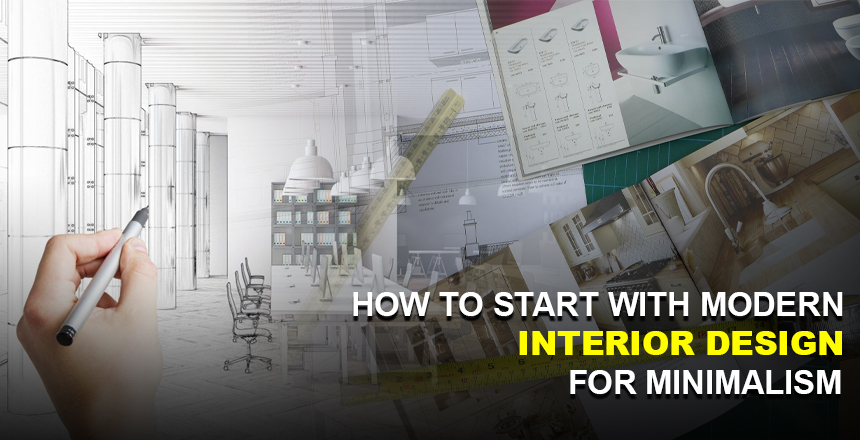Over the recent past, interior design has undergone a revolution with the most recent trends
being minimalism. This design philosophy is all about simplicity, functionality, and clarity in form
and minimalist patterns, giving it a subtle luxury look. Applying minimalist techniques to your
house interior design could help to achieve optimum results by getting rid of clutter and offering
the best environment for mental and even physical health. In this article, the fundamentals of
minimalism will be introduced, and a practical guide about how to make use of minimalism in
modern interior design will be presented.
Understanding Minimalism
But to begin with, what’s minimalist interior design? To better understand this topic, we need to
start with what minimalism is mínimalism. To the heart of minimalism, it is possible to downplay
everything that is not rather necessary and concentrate on essentials only. This design
philosophy can be used in many cases, such as interior designs. As applied to interior design,
minimalism involves providing simple designs, avoiding the inclusion of unnecessary items and
furniture, the use of products and furniture of simple geometric forms, and the use of calm
colors.
Decluttering and Organizing
The first way of implementing minimalism into your interior design is by cleaning and arranging
your home. Additionally, it’s good to sort things that you don’t need or things you haven’t used
for a long time. ‘If it’s hard to let go of an object, ask yourself how this object serves you in terms
of your mental health,’ they said. For layout, it is most effective to have minimal storage
necessities, such as shelves, baskets, and containers, to avoid clutter.
Choosing Furniture
Talking about furniture, minimalistic means that there should be no extra and only the necessary
to wear the interior. It pays to choose versatile furniture, for example, such as a sofa bed or
storage furniture that has other functions too. As for design, prefer such furniture pieces that
have clear geometric shapes, glossy surfaces, and gray tones or no color at all. Still, when
selecting such products, it is rather important not to focus on buying things that look good more
than necessary but rather focus on the utility of the purchased items.
Color Palette
Another key here is that neutral colors are the signature of a minimalist interior design, as they
keep your room looking fresh and calming. But do not shy away from adding colors to the space
through paintings, throw rugs, or cushions. These bright shades can enliven and embellish your
monochromatic interiors so that you will feel detached and composed.
Lighting
In minimalist design, the usage of light is most important, both as the light source and as the
component of the design. Maintain a light-colored interior and do not put up the heavy curtains
or blinds, or choose the sheer materials for the window coverings. For artificial lighting, avoid
gaudy lamps and go for basic, elegant pendant lamps, floor lamps, or table lamps. The dimmer
also provides a nice opportunity to make the aesthetic and the way that the light changes more
flexible.
Adding Texture and Pattern
Although this is the main idea of minimalism, it does not mean your home should be gray and
boring. On the contrary, it is possible, including all these elements knowingly, to make the
minimalist interior more diverse and intriguing. As for texture, things like wood, stone, or woven
fabric will also look much more comfortable than any falsely blissful synthetic textile. In regard to
pattern, select basic patterns that are repeated in ground or pastel colors. This will assist in
keeping your space relatively unfussy and supplement the area with tiny visual accents.
People’s Relations to their Environment: the Use of Artwork and Decoration
Artworks and other decorations Minimalism does not need a lot of significant elements in homes
and offices. Why have a bunch of art when you can have one great piece or a beautiful gallery
of paintings that really suits your interior design? As for accessories, it is not definitely better to
select plain and practical ones, such as potted plants, vases, or other purely adopted objects
that can also have a kind of sculptural look.
Focusing on Greenery
It does not mean that it is a waste of effort to include plants in your interior design simply
because you like minimalism—that will keep your house naturally full of energy and natural
feeling that it can help make your well-being! Allow for plants that do not require much attention
to be brought indoors easily and go for plain pots for that sleek look.
Creating Balance and Harmony
In the complex of minimalist principles, the most important one is the proportions that can be
manifested in scale and symmetry. When it comes to scale, avoid huge furniture or ornate
furniture or appointments in small spaces and not lavish in large rooms. The layouts, therefore,
should be in symmetrical proportion; hence, linear perspectives are better as they are in terms
of proportion. And then you apply symmetry in your minimalist design; you get a level to elevate
the balance in your minimalistic interior.
Embracing Imperfection
On one hand, minimalism is all about simplicity and clean up, but one does not want to overdo
it. Some plans should be as unique as the people who inhabit them, which means that unique,
personal flourishes to the design should not be feared. Anything, really, from art that might be
the only one of its kind to a gift handed down in the family. These details can make your
minimalist house more interesting and individual and give reflection to it.
Conclusion
Integrating minimalism into your contemporary interior design may well prove to be the best
approach to a stress-free living environment with less clutter. By just doing the following ten
things, it is not a problem to turn a house into a minimalist haven. As always, a minimalist style
must strike the perfect balance between organized and complex, plain yet unique and
interesting.








